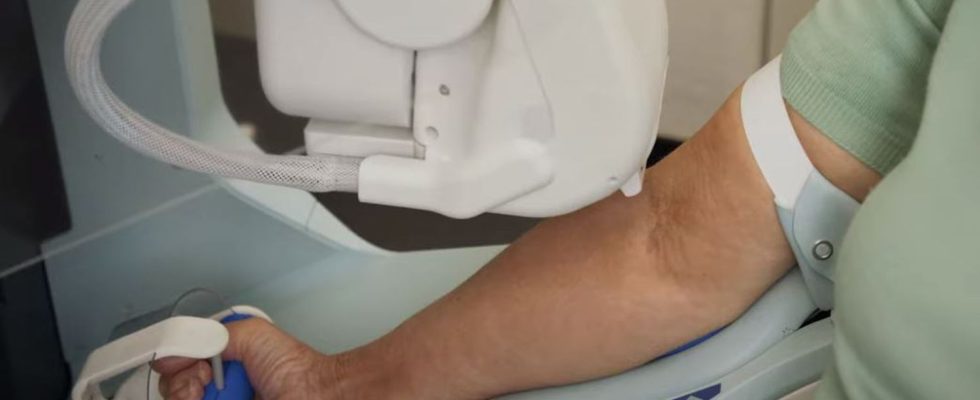The world’s largest test of a blood-taking machine is taking place in a hospital in the Netherlands. Objective: free up time for nurses, who are frequently understaffed.

Published
Reading time: 2 min

We might soon have a surprise when we arrive at the hospital. It will no longer be nurses who take blood tests, but robots. Testing has already started at the Albert Schweitzer Hospital in Dordrecht in the Netherlands. If you have to take a blood test there, you will be asked to enter a very designer cabin, grab a handle then place your arm on a pretty blue armrest.
From there, a small robot will come and scan your veins with an infrared camera, locate the right one, then delicately insert a needle into it to take the blood. Everything is automatic. We even put a small bandage on you to prevent bleeding.
This is the world’s largest test of a blood-taking machine, a robot designed by the startup Vitestro. The objective is to free up time for nurses who are regularly understaffed and overworked in hospitals.
Like a photo booth
Does that mean that we are all alone, left to our own devices in front of the machine? As this is a clinical trial, for now there is still a specialist supervising. But it is true that in the long term, the machine must operate almost self-service, like a photo booth, particularly for blood donation campaigns. In principle, it does not need specialized personnel.
The machine has been tested and retested. First on fake arms then on more than 1,500 real patients. It’s medical equipment, so we’re very careful. Several hospitals have already placed orders. But it is only at the end of this full-scale test that the machine will be able to obtain certification. Which will authorize or not its marketing.
For its creators, it is even more reliable than a human. A novice nurse sometimes has difficulty finding the vein. And when they have to try it several times, it can really hurt. The robot has the advantage of seeing through the skin. We are sure that the operation will be carried out, each time, in the same way with the same level of quality. We therefore erase any human error. Patients still need to have confidence and agree to be manipulated by a machine.
